
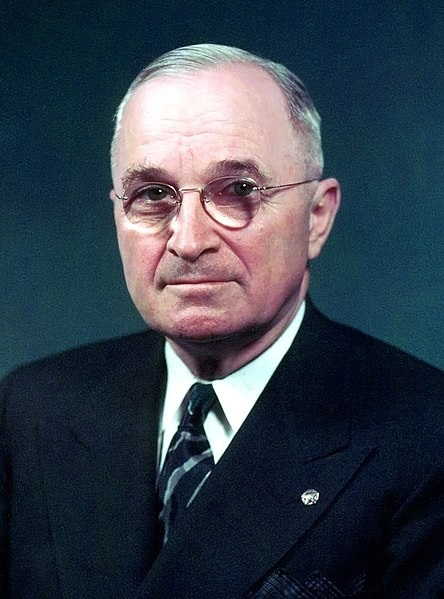
Harry Truman was a leading figure in the Cold War, a period of intense rivalry between the United States and the Soviet Union that lasted from 1945 to 1991. Before being elected as the 33rd President of the United States in 1945, Truman had served as Vice President to Franklin D. Roosevelt and was thrust into the role of President upon Roosevelt’s death. Truman was a strong advocate of the containment policy, which aimed to limit the spread of communism. He ordered the United States to provide military and economic aid to countries that were threatened by Soviet expansion.
This policy was put into action shortly after World War II with the Truman Doctrine, which provided assistance to Greece and Turkey. The Truman Administration also created the Marshall Plan, a large-scale aid program designed to help rebuild Europe following the devastation of World War II. This plan was meant to help countries in Europe resist the influence of communism.
The Korean War, which began in 1950, was also an important event during the Truman Administration. Truman ordered U.S. troops to fight in the conflict and worked with the United Nations to maintain peace.
The Cold War between the United States and the Soviet Union continued throughout the remainder of Truman’s presidency. In 1948, the Soviet Union blocked access to Berlin, and the United States responded with a massive airlift of supplies to the city. This event, known as the Berlin Airlift, was a symbol of the Cold War. Truman also oversaw the creation of the North Atlantic Treaty Organization (NATO), which was formed in 1949 and provided a formal alliance between the United States and its European allies. This alliance was designed to contain the Soviet Union and prevent its expansion.
Overall, Harry Truman was a major figure in the Cold War, and his policies were instrumental in containing communism and preventing further Soviet expansion. His containment policy, the Truman Doctrine, the Marshall Plan, the Korean War, and the creation of NATO all played a part in the Cold War, and his legacy remains an important part of US history.
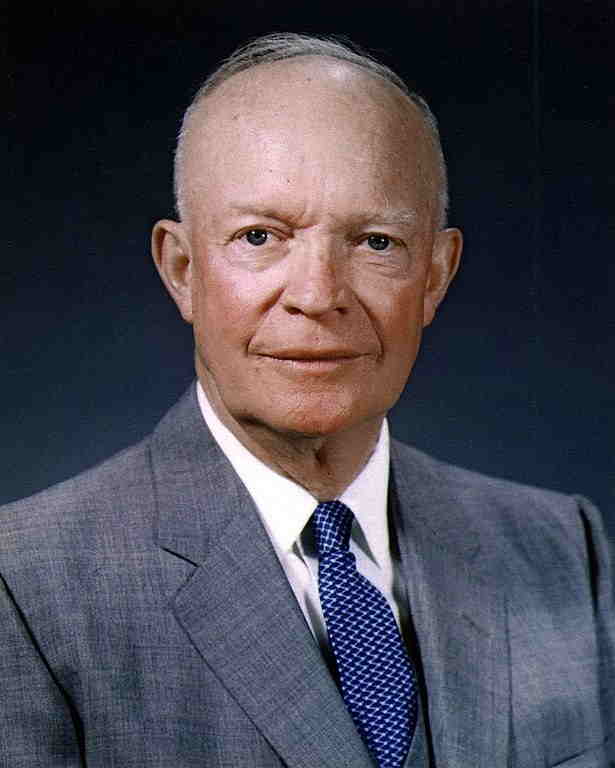
Dwight D. Eisenhower, the 34th President of the United States, played a major role in the Cold War between the United States and the Soviet Union. Following World War II, the United States and the Soviet Union emerged as the two major superpowers in the world. President Eisenhower used a policy of containment to check the spread of communism. He proposed the massive buildup of arms to bolster the United States' military strength and ensure the country's security against the Soviet Union. The strategy of containment was successful in preventing the spread of communism, but it also created a tense and dangerous confrontation between the two sides.
President Eisenhower sought to reduce tensions in the Cold War through diplomacy rather than direct confrontation. In 1953, he proposed the “Atoms for Peace” program, which provided assistance to countries seeking to develop nuclear technology for peaceful purposes. He also encouraged the formation of the North Atlantic Treaty Organization (NATO) to provide a collective defense against the Soviet Union.
President Eisenhower's most successful policy was the Open Skies proposal, which allowed for mutual aerial reconnaissance of the Soviet Union and the United States. This proposal did much to reduce the fear of a surprise attack and helped to reduce tensions between the two countries.
President Eisenhower also worked to reduce tensions through personal diplomacy. He held several summit conferences with Soviet Premier Nikita Khrushchev, including the Geneva Summit of 1955. These meetings helped to reduce Cold War tensions and facilitated an exchange of cultural and scientific ideas between the two countries. Throughout his presidency, President Eisenhower worked to reduce Cold War tensions and promote peace. His policies of containment and diplomacy helped to check the spread of communism and reduce the danger of a major conflict between the two superpowers.
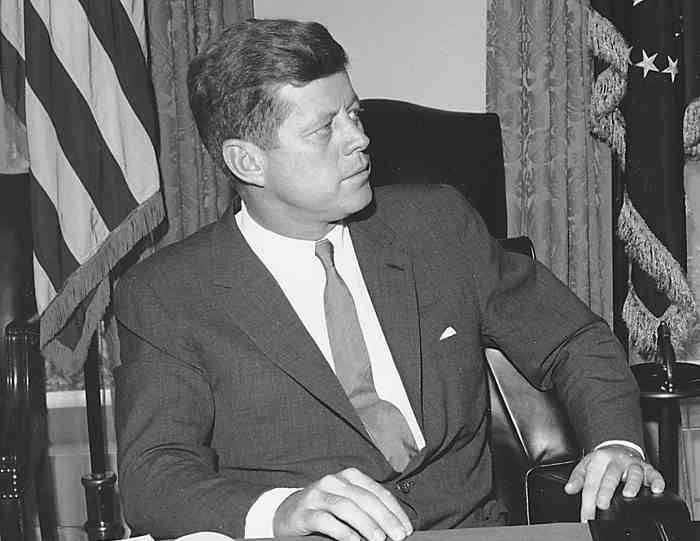
John F. Kennedy was an influential American President during the Cold War era. He was elected in 1961 and served until his death in 1963. During his time in office, Kennedy was an important figure in the Cold War. He was known for his aggressive stance against communism, which he saw as an existential threat to the United States and the rest of the world. Kennedy was a vocal advocate for the containment of the Soviet Union, a policy which aimed to contain the spread of communism to other nations.
He also pushed for increased military spending and the expansion of the United States’ nuclear arsenal in order to deter the Soviets from starting a war. Kennedy also supported a policy of “flexible response”, which allowed the United States to respond to a Soviet attack with more than just nuclear weapons. Kennedy was also a key figure in the Cuban Missile Crisis, a standoff between the United States and the Soviet Union over the placement of Soviet missiles in Cuba.
Kennedy was determined to stand up to the Soviets and ultimately succeeded in forcing them to withdraw the missiles. This was a major victory in the Cold War and helped to maintain peace in the region. Kennedy was also an early supporter of détente, a policy which aimed to reduce tensions between the United States and the Soviet Union. He saw détente as a way to ease the Cold War and to eventually bring about a better relationship between the two countries. Kennedy’s efforts to promote détente were ultimately unsuccessful, but his willingness to negotiate and his efforts to reduce tensions between the two countries was appreciated by many.

Lyndon B. Johnson was the 36th President of the United States, serving from 1963 to 1969. President Johnson’s involvement in the Cold War began when he became Vice President under John F. Kennedy. During this period, President Kennedy and his team formulated the Alliance for Progress, a program designed to counter the spread of communism in Latin America. In addition to this, President Kennedy also helped to negotiate the Nuclear Test Ban Treaty, which was signed in the summer of 1963.
Following Kennedy’s assassination, President Johnson inherited the Cold War. He was determined to carry out Kennedy’s vision for foreign policy and made sure that the United States maintained a strong stance against the Soviet Union. He increased military aid to South Vietnam and also sought to strengthen alliances with other countries in the region, such as Thailand and South Korea. He also strongly supported the containment policy, which was designed to limit the spread of communism.
In addition to foreign policy, President Johnson also worked hard to ensure that the United States economy continued to prosper. He implemented the Great Society program, which increased the federal government’s investment in education, healthcare, and other social services. This helped to create economic stability and an increased standard of living.

Richard Nixon was a major figure in the Cold War. Nixon was a staunch anti-communist and throughout his presidency, he sought to contain the spread of communism in the world. During his first term as president, Nixon focused on improving relations with the Soviet Union and China, a strategy known as détente. In 1972, Nixon and Soviet leader Leonid Brezhnev signed the Strategic Arms Limitation Treaty (SALT I) which limited the number of nuclear weapons deployed by each country.
Nixon also visited China in 1972, becoming the first U.S. president to do so. Nixon also sought to end the war in Vietnam, which had divided the United States during his presidency. Nixon gradually reduced the number of U.S. troops in Vietnam, and in 1973, the United States and North Vietnam signed the Paris Peace Accords, which ended U.S. involvement in the conflict.
Nixon also sought to limit the spread of Soviet influence in the Middle East. In 1972, he provided aid to Israel during the Yom Kippur War, and in 1974, he signed the Sinai Disengagement Agreement which ended the war between Israel and Egypt.
In addition to his foreign policy initiatives, Nixon sought to limit the power of the Soviets in other ways. He established the Environmental Protection Agency in 1970, and increased funding for the National Aeronautics and Space Administration (NASA). He also pushed for the development of new technologies such as the supersonic transport plane and the space shuttle. Nixon also sought to modernize the U.S. military, and he increased defense spending by over 70% during his presidency.
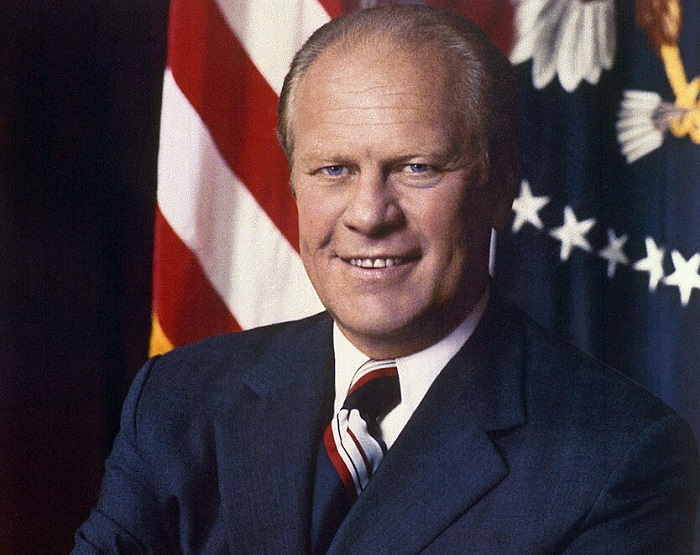
Gerald Ford, the 38th President of the United States, assumed office on August 9, 1974, at the height of the Cold War. Though his tenure was short, lasting just over two years, he was confronted with significant foreign policy challenges, reflective of the broader geopolitical tensions of the period.
Ford maintained a strong stance against the expansion of Soviet influence. He continued the policy of détente initiated by his predecessor, Richard Nixon, aimed at easing hostilities with the Soviet Union through diplomacy and arms control. The most significant of his efforts was signing the Helsinki Accords in 1975, which recognized the borders of Europe set after World War II, confirmed "non-interference" in internal affairs of sovereign nations, and emphasized human rights and freedom of speech.
Ford's presidency, though brief, made a significant contribution to shaping U.S. actions and policies during the critical years of the Cold War.
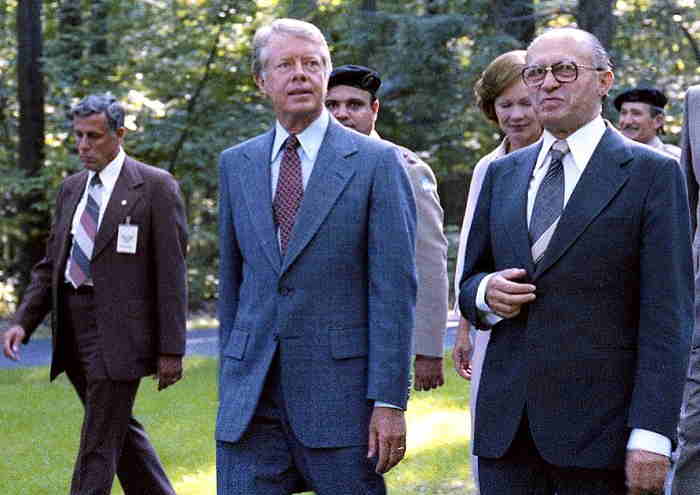
Jimmy Carter was the 39th President of the United States and served from 1977 to 1981. During his presidency, the Cold War was still a major factor in international relations. Carter was a proponent of detente, a policy of reducing tensions and seeking mutual understanding between the United States and the Soviet Union. He also sought to reduce the proliferation of nuclear weapons and promote human rights. In 1979, Carter and Leonid Brezhnev signed the SALT II Treaty, which further limited the number of nuclear weapons the two countries could possess. The treaty was not ratified by the U.S. Senate, but it did reduce the number of nuclear weapons in both countries.
In 1980, Carter boycotted the Moscow Olympics in response to the Soviet Union’s invasion of Afghanistan. This action was seen as a major step in putting pressure on the Soviet Union to withdraw from Afghanistan. Carter also increased the United States’ military presence in the Persian Gulf, which was seen as a move to counter any Soviet influence in the region.
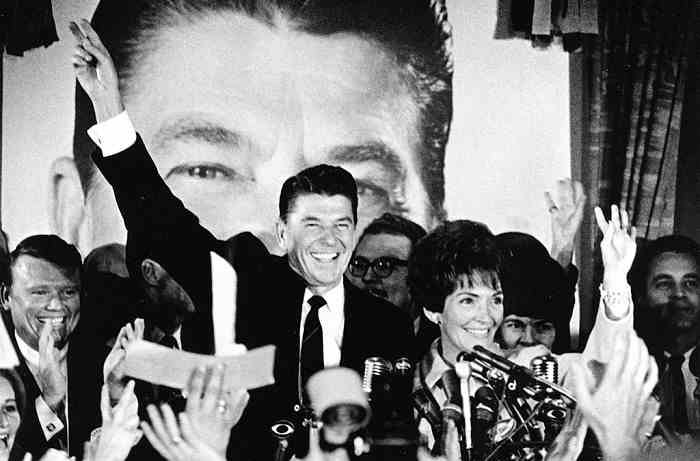
Ronald Reagan was one of the most influential presidents in American history and is widely credited with helping to end the Cold War. As president, Reagan pursued a policy of aggressive anti-communism, which included a strong stance against the Soviet Union and its allies. At the beginning of his first term, Reagan followed a strategy of confrontation and containment, increasing military spending and launching the Strategic Defense Initiative (SDI), a missile defense system that was derisively nicknamed "Star Wars" by the press.
Reagan also engaged in a sustained public relations campaign against the Soviet Union, calling it an "evil empire" and advocating for a "rollback" of Soviet influence rather than containment. Reagan also worked to improve relations with Mikhail Gorbachev, the Soviet leader who had assumed power in 1985. Gorbachev and Reagan held a number of summit meetings, where they discussed arms control and other issues. In 1987, the two leaders signed the Intermediate-Range Nuclear Forces (INF) Treaty, which eliminated an entire class of nuclear weapons. This was a major breakthrough in the Cold War and was seen as an indication that the two countries were now willing to work together. Reagan and Gorbachev also sought to reduce tensions in other areas. They issued joint statements condemning terrorism, and in 1989 they signed a treaty that removed thousands of military personnel from the border between East and West Germany. This was a major step towards reducing the risk of a military confrontation during the Cold War.
Reagan's policies were instrumental in bringing the Cold War to an end. By engaging the Soviet Union and working to create an atmosphere of trust, Reagan helped to create a more peaceful world. His policies also helped to create a more unified Europe and helped to set the stage for the eventual reunification of Germany. Reagan's legacy as a Cold War leader is one of the most enduring of any American president.
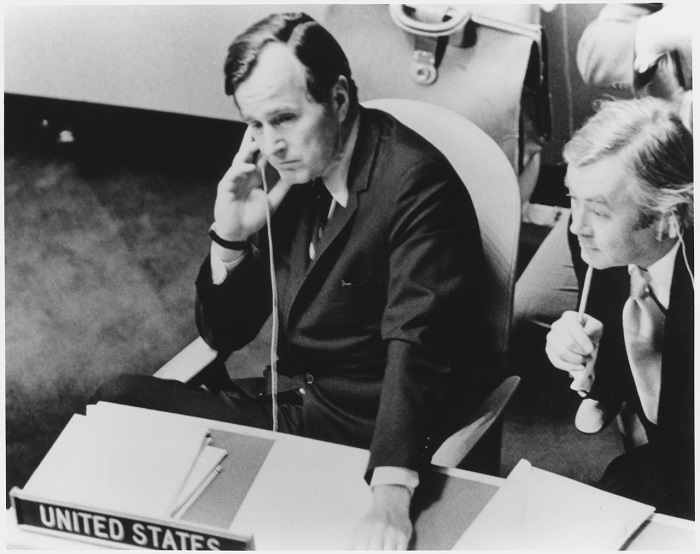
George H.W. Bush, the 41st President of the United States, served in the crucial final stages of the Cold War from 1989 to 1993. Having previously served as vice president, CIA director, and ambassador to the United Nations, Bush was well equipped to handle the challenges that the Cold War uncertainty presented.
Bush's presidency witnessed unprecedented global change, including the fall of the Berlin Wall in 1989, signaling the end of Communist rule in Eastern Europe. One of his most enduring legacies was managing post-Cold War crises prudently – his cautious approach prevented the United States from appearing to gloat over the Soviet Union's troubles, thus facilitating a peaceful transition.
In 1991, with the dissolution of the Soviet Union, Bush declared the Cold War over. His careful, pragmatic approach to foreign policy helped navigate the world into the post-Cold War era, ensuring a relatively peaceful transition.